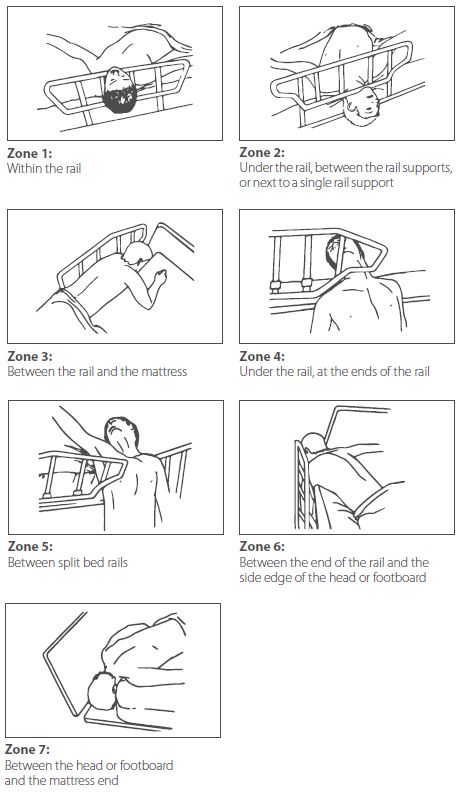Entrapment is defined as an occurrence involving a patient who is caught, trapped, or entangled in a hospital bed system.1 Since 1997, the U.S. Food and Drug Administration (FDA) has published and updated its guidance to reduce entrapment injuries and death, identifying seven common zones of entrapment risk (see illustrations).2
Identifying At-Risk Patients
Patients are at the highest risk of entrapment while attempting to exit their beds—especially those who are frail, elderly, or disoriented. Pain, uncontrolled movements, hypoxia, or absence of toileting aid can also increase risk. Ongoing assessment is recommended to reduce a patient’s risk of entrapment. This may include understanding the patient’s sleep habits, bedtime routines, and mobility challenges.3
Promoting Bed Safety
Caregivers and facilities must promote a culture of safety, including regular inspections of bed frames, mattresses, and accessories to ensure proper function. Medical bed manufacturers follow international standards for design and testing to mitigate entrapment risk—the IEC 60601-2-52 standards were revised in 2015.4


